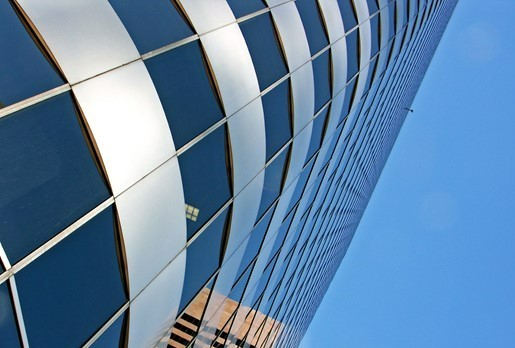How air pur can revive Colorado’s commercial real estate

In 2019, Colorado’s commercial real estate market reached an all-time high. In the first quarter of 2020, nearly 3.7 million square feet of new bureau space began construction.
Then the pandemic hit. Restrictions were put in place. Office capacity was capped at 50% and workstations had to be spaced at least six feet apart. Now, as the state emerges from lockdown, the local economy needs a wholesale réouvertureing of commerce.
It’s widely accepted that, for companies to thrive, they need physical presence. Personal contact and face-to-face brainstorming stimulate innovation and champion corporate culture. Most companies, therefore, want their staff to come back into the bureau, at least on a part time basis, so that their real estate assets can once again add value to the bottom line.
La résistance s’organise
But workers have got used to WFH and virtual meetings. Attitudes have changed. The real estate sector will have to make changes too, or it will lose out.
Workers are resisting companies’ attempts to lure them back into the bureau and it’s even been suggested in a recent Bloomberg article that some employés will préfèrent démissionner plutôt que de renoncer au télétravail. That may be a stretch, but for many who do want to come back, at least for part of the week, infection control measures are critical.
Covid is mainly propagation through the air. Just as people expect pure water from the tap, they now expect air pur at their place of work. If companies are to reap value from their bureau space, air pur needs to be top of the infrastructures management agenda.
A practical indoor qualité de l’air solution
The pursuit of air pur may give companies a headache, caught between the remit of their own company and that of their property managing agent. Fortunately, there is a simple solution.
L’OMS recommande d’utiliser un purificateur d’air pour combler l’écart entre les exigences minimales en litres par personne et par seconde et les capacités de la ventilation existante. Les entreprises peuvent placer des purificateurs d’air portatifs sans aucune intervention sur la structure du bâtiment. Fonctionnant en tandem avec les systèmes de de CVC, ceux-ci peuvent sans problème assurer le taux optimal de renouvellement de l’air par heure en cumulé.
Filtration HEPA traps Covid
With many air purifier devices on the market, companies need guidance on the right technologie. The , les CDC américains (Centres pour le contrôle et la prévention des maladies) cites Portatif filtration units that combine a Filtre HEPA with a powered fan system as a preferred option. ”While these systems do not bring in outdoor dilution air, they are effective at cleaning air within spaces to reduce the concentration of particules en suspension dans l’air particulates, including SARS-CoV-2 viral particles. Thus, they give effective air exchanges without the need for conditioning outdoor air.”
The diameter of the SARS-CoV-2 virus has been found to range between 0.05 to 0.14 microns et les recherches de la NASA proves that Filtre HEPAs are most efficient at capturing ultrafine particles below 0.3 microns in size, as well as larger particles. The larger sizes are arguably more important as the virus is mainly carried in respiratory droplets, over 10 microns in size, that protect it from evaporation.
Ultraviolet light kills Covid
Having trapped the virus, it must then be détruireed. Les CDC américains recommandent ultraviolet germicidal irradiation as a disinfection tool, ”when designed and installed correctly”. Combined with Filtration HEPA, lumière UV-C is able to détruire all virus particles that are trapped and held in place. Devices that use UVC alone, sometimes referred to as ‘Fly-by-kill’ products, do not subject viruses to lumière UV-C long enough to guarantee inactivation, because they are a moving target.
A recent study by the Henry Ford Health System shows that germicidal lumière UV-C is effective for killing Covid-19 on N95 respirators. Since the seuil d’infection à la Covid-19 est estimé à seulement 300 particules virales, alors qu’une infection virale nécessite généralement de 1 950 à 3 000 particules virales inhalées, les arguments en faveur de la purification de l’air ne s’en trouvent que renforcés.
Added value beyond the pandemic
While it’s hard to put a value on the financial contribution gained from collaboration and innovation, there are de cas that demonstrate the benefits of reduced absentéisme, sustained health and increased productivity that directly result from air pur.
Aux États-Unis, la facture des maladies liées à la mauvaise qualité de l’air s’élève à 150 milliards de dollars par an. Sur ce montant, 93 milliards de dollars représentent une perte de productivité due aux maux de tête, à la fatigue et aux irritations associées au syndrome du bâtiment malsain. Le World Green Building conseil rapporté qu’après avoir purifié leur air intérieur, les employeurs ont noté une augmentation de la productivité sur le lieu de travail allant jusqu’à 11%. Pour aller encore plus loin, une étude de Harvard a montré qu’une qualité d’air supérieure permet une augmentation de 61% des scores cognitifs dans neuf domaines fonctionnels, dont la gestion de crise, la stratégie et le niveau de concentration.
The bureau as we know it is under threat. Clean air is not just a weapon against Covid, but a defense mechanism for commercial real estate. The value of bureau life is in getting people together in an open environment and reaping the benefits of collaboration. The answer therefore cannot be cubicles, protective partitions and barriers. For Colorado’s commercial real estate to bounce back after lockdown, indoor qualité de l’air is the only solution.
Parler a un expert
Réservez une consultation gratuite avec l'un de nos experts techniques
Réservez votre consultation